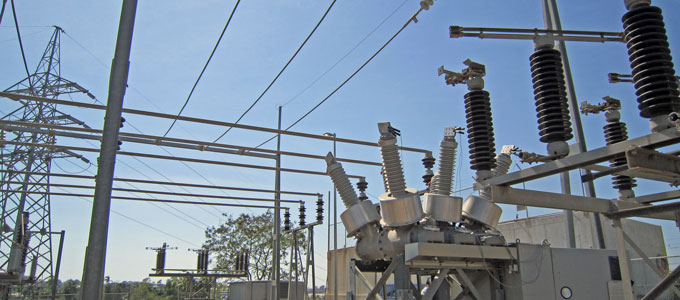THOUGHT LEADERSHIP
Starting safe, staying safe: building safety into electrical design
Because electricity has inherent risks with serious consequences, safety should always be a fundamental concern of consultants and clients working with power assets at all stages of the project lifecycle.
We know that the safest and best outcomes are achieved by using a ‘safety in design’ process to ‘design safety in’ from the very start. As projects progress towards implementation, remedying risks becomes increasingly costly and progressively less effective, so it’s far better to get things right early on.

Safety applies to electrical design too
Giving greater and more systematic attention to eliminating safety hazards at the design stage emerged from the historically poor safety performance of the construction industry and is now well established.
Safety in design (SID) processes integrate hazard identification and risk assessment methods into the design of all aspects of a project to eliminate or minimise the risk of injury throughout the project or structure’s life (including decommissioning or disposal).
It is a common misconception that SID processes don’t apply to the electrical industry because we have ‘tried and true’ standardised designs that already comply with existing safe standards and systems, and are known to be safe.
While it is true that standard electrical designs are generally very safe during the operational phase of installations, the same cannot always be said about the construction, commissioning and decommissioning phases of an asset’s life.
Also, encouraging engineers to come up with innovative solutions often means modifying standardised designs. So the virtue of innovation carries the potential to create risks during the operational phase, if safety isn’t managed correctly.
A new set of skills
To effectively identify and manage safety risks during the construction, commissioning and decommissioning phases, the design engineer needs to have a new set of skills, not often included in the traditional education of a professional engineer. The engineer must understand not only how their design will function, but also understand the process of its manufacture, installation, commissioning, operation and decommissioning.
As part of Hydro Tasmania, Australia’s largest producer of renewable energy, Entura’s electrical engineers extend their skill sets and understanding of owning and operating assets by working through much of the same training as our asset managers and plant operators (including isolation, locking, tagging, low-voltage rescue and general power plant safety procedures).
Our close and long-term relationship with the extensive power assets of Hydro Tasmania also allows our specialists to spend much more time in operational power stations and switchyards than many other consultants.

More than ‘ticking the box’
At Entura, we recognise that safety in design is not static, it can’t be done at just one point in time, it can’t just involve electrical designers, and it must be more than a ‘tick the box’ exercise if it is to make meaningful improvements to people’s safety as well as comply with regulations.
That’s why we integrate safety into the design process at all stages. Because design is not a simple or linear process, multiple safety review meetings allow the safety of the design to be formally reassessed at every step and for every phase of the asset’s life, in addition to the day-to-day awareness and integration of safety into all our design decisions.
Typically, at least two SID review meetings are held: one when the conceptual design is nearing completion, and one when the detailed design is 50–80% complete. The SID meeting for a complex project could include representatives from the client, the construction team, the design team and the plant operator.
Any limitations in the designer’s knowledge of the construction, operational or decommissioning environments are compensated for by the broader knowledge available at the SID review meeting. Further stakeholders who may have additional safety insights for specific or unusual issues can also be identified.
SID review meetings give engineers in different disciplines or specialties the opportunity to communicate and explain their decisions. Where a decision made by one engineer could inadvertently create a safety impact on another discipline, this can be quickly identified and appropriately remedied.
When the concept of SID is valued by engineers and clients, and appropriately built into project processes (whether for dam safety, hydropower station safety, or electrical safety), it results in safer designs. And safer designs make safer assets and safer workers. Investing early in designing out any foreseeable safety risks will save money and time through the project lifecycle, and will protect your reputation, now and into the future.
To discuss how Entura can help you ensure the safety of your electrical assets, contact David Wilkey on +61 407 875 391 or Patrick Pease.
About the author
David Wilkey is a specialist electrical engineer at Entura. David has 20 years of experience in a wide range of electrical engineering projects including power system studies, power system and generator protection, generator connection rules, and primary plant electrical engineering. David’s primary interests include all aspects of electrical engineering for hydropower projects, such as hydro turbine governors, generator excitation and generator protection systems.
MORE THOUGHT LEADERSHIP ARTICLES
September 23, 2015





